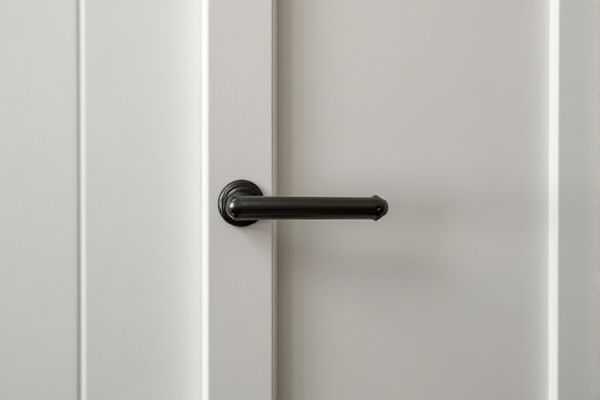
Concealed closet handles offer a sleek, minimalist look by being flush with the door surface, enhancing modern aesthetics while pull handles provide a classic, tactile grip that is easier to use for quick access. Explore the advantages and design considerations of both options to choose the perfect fit for your closet.
Table of Comparison
| Feature | Concealed Closet Handle | Pull Handle |
|---|---|---|
| Design | Sleek, minimalist, hidden from view | Visible, protruding, variety of styles |
| Installation | Requires precise embedding or recessing | Surface-mounted with screws |
| Material | Metal, plastic, or integrated panel material | Metal, wood, plastic, or mixed materials |
| Ergonomics | Flush grip, subtle use | Easy to grip, accessible |
| Maintenance | Less exposed to damage, harder to clean | Exposed, easy to clean or replace |
| Aesthetic Appeal | Modern, clean lines | Decorative, statement piece |
| Cost | Generally higher due to installation | Affordable and easy to replace |
Introduction to Closet Handle Options
Closet handle options vary primarily between concealed handles and pull handles, each offering distinct benefits for functionality and aesthetics. Concealed closet handles provide a sleek, minimalist look by integrating into the door surface, enhancing a modern interior design while minimizing visual clutter. Pull handles, available in various shapes and materials, prioritize ease of grip and accessibility, making them a popular choice for both traditional and contemporary closets.
What Are Concealed Closet Handles?
Concealed closet handles are integrated into the door design, providing a seamless and minimalist look by hiding the handle within the door surface. Unlike pull handles, which protrude and are visibly attached, concealed handles often feature grooves or recessed areas that allow users to open doors without obvious hardware. This design enhances the aesthetic appeal and maintains a clean, modern appearance in contemporary closet spaces.
Overview of Pull Handles for Closets
Pull handles for closets offer a practical and stylish solution for easy access, available in a variety of materials such as metal, wood, and plastic to match your interior design. Unlike concealed handles, pull handles provide a visible grip that enhances functionality and can serve as a decorative element on closet doors. Your choice between concealed and pull handles depends on whether you prioritize sleek, minimalist aesthetics or more pronounced, tactile hardware.
Aesthetic Differences: Concealed vs Pull Handles
Concealed closet handles offer a minimalist, seamless look that blends effortlessly with your furniture, creating a modern and sleek aesthetic. Pull handles provide a more traditional and tactile appeal, often serving as a design feature with various styles, shapes, and finishes that add character to your closet. Choosing between the two impacts the overall design language of your space, with concealed handles emphasizing subtlety and pull handles offering visible detail.
Functionality and Ease of Use
Concealed closet handles offer a sleek, minimalist look while maintaining smooth operation through recessed grips that prevent snagging on clothing. Pull handles provide a more tactile grip, making them easier to grasp and pull, especially for people with limited hand strength or dexterity. Functionality is balanced between aesthetic preference and the user's comfort, with concealed handles excelling in seamless design and pull handles in straightforward usability.
Installation Complexity and Requirements
Concealed closet handles require precise cutouts or grooves within the door surface, demanding accurate measurements and specialized tools for installation. Pull handles typically involve straightforward installation with pre-drilled holes, making them more user-friendly and compatible with standard screwdrivers. The concealed handle's seamless design necessitates skilled labor and potentially higher costs, while pull handles offer easier replacement and flexibility in placement.
Durability and Maintenance Comparison
Concealed closet handles offer enhanced durability due to their recessed design, which minimizes exposure to wear and tear compared to pull handles that protrude and are more prone to damage. Maintenance for concealed handles is simpler as they accumulate less dust and grime, requiring less frequent cleaning. Pull handles, while easier to grip, often need regular upkeep to prevent loosening or tarnishing over time, impacting their longevity.
Space Efficiency: Which Handle Saves More Room?
Concealed closet handles save more room by sitting flush within the door surface, eliminating protrusions and maximizing usable space in tight areas. Pull handles extend outward, consuming additional space and potentially causing obstructions in narrow corridors or small rooms. Your choice impacts spatial efficiency, with concealed handles offering a sleek, minimalist solution ideal for optimizing limited closet space.
Cost Considerations: Concealed vs Pull Handles
Concealed closet handles typically cost more upfront due to their intricate design and installation requirements compared to pull handles, which are generally more affordable and easier to replace. Hidden handles can also add value by providing a sleek, minimalist look that may enhance your home's aesthetic appeal and potentially increase resale value. Choosing between the two depends on your budget and preference for either cost-efficiency or modern design appeal.
Best Applications and Final Recommendations
Concealed closet handles are best suited for modern, minimalist interiors where a sleek, seamless look enhances the overall design, making them ideal for bedrooms or living spaces emphasizing clean lines. Pull handles offer greater grip and durability, making them the preferred choice for heavy or frequently used doors in kitchens, closets, and storage areas requiring robust functionality. For final recommendations, opt for concealed handles in aesthetic-driven projects prioritizing subtlety, while pull handles work better for practicality and ease of use in high-traffic areas.
 homyna.com
homyna.com